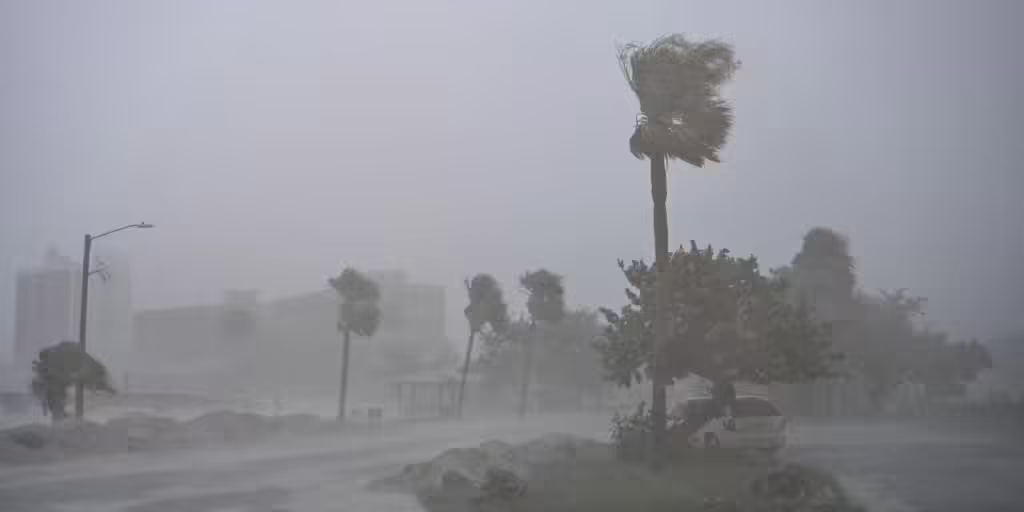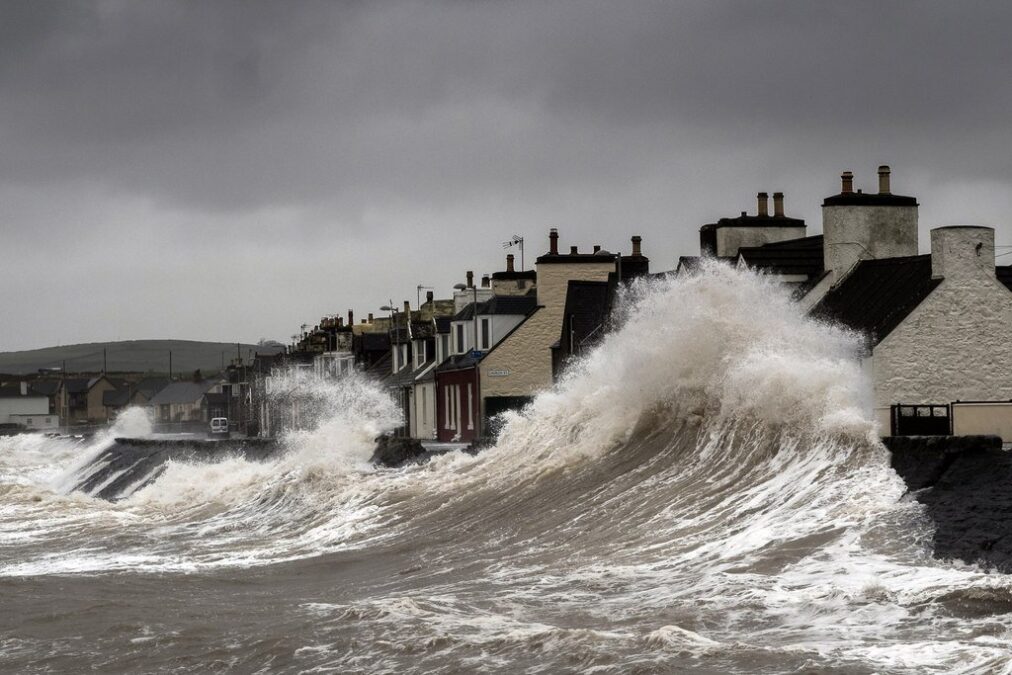Record Storm Surge Forecast in Florida from Hurricane Milton

Florida is no stranger to hurricanes, but the forecast for Hurricane Milton has the state bracing for an unprecedented event—a record-breaking storm surge. In this article, we’ll delve into what a storm surge is, why it’s so dangerous, and what this means for Florida. We’ll also discuss the preparation efforts underway and how residents can protect themselves.
Hurricane Milton: An Overview
Hurricane Milton has captured attention due to its rapid intensification and the potential havoc it might wreak. Milton is currently classified as a Category 4 hurricane, which means it carries sustained winds of at least 130 mph. While hurricanes bring multiple hazards, including wind and rain, it’s the storm surge that has many experts worried this time.
- Background of Hurricane Milton
Hurricane Milton began as a tropical depression in the Atlantic but quickly gathered strength due to favorable conditions, such as warm sea surface temperatures and low wind shear. Within a few days, it evolved into a major hurricane, posing a direct threat to the Gulf Coast of Florida. - Path of the Hurricane
Forecasters predict Milton will make landfall near the Florida Panhandle, but its effects could be felt across the state. The cone of uncertainty indicates that the storm could impact major cities, including Tampa, Orlando, and even parts of Miami.
What is a Storm Surge?
A storm surge is often one of the most dangerous and destructive elements of a hurricane. It’s a rise in seawater levels caused by the storm’s winds pushing water onshore.

- Definition and Explanation
Think of it as a massive, slow-moving wall of water that can inundate coastal areas. It’s different from regular tides because it’s driven by the wind and atmospheric pressure changes caused by the hurricane. - Why Is It Dangerous?
Storm surges can lead to rapid flooding, sometimes overtaking entire communities in minutes. The combination of high water and strong waves can destroy buildings, roads, and other infrastructure. The deadliest aspect? It’s unpredictable and can occur far from the hurricane’s eye, catching people off guard.
Storm Surge vs. Regular Coastal Flooding
You might wonder how a storm surge differs from other types of flooding, like high tides or heavy rain. The main difference is in scale and speed.
- Key Differences
Storm surges are much larger, covering vast coastal areas. While regular coastal flooding may result from tides, storm surges can drive water several miles inland, increasing the potential for widespread damage.
Factors Contributing to Record Storm Surge in Florida
Several key factors are making experts predict that Hurricane Milton will cause one of the highest storm surges Florida has ever seen.
- Influence of Hurricane Strength
Milton’s Category 4 strength means it’s capable of pushing massive amounts of water toward the coast, especially given its large size and sustained winds. - Coastal Geography
Florida’s low-lying topography makes it particularly vulnerable to storm surges. Flat areas near the coast allow water to travel further inland, potentially flooding towns and cities. - Wind Speed and Direction
Milton’s projected landfall location means its strongest winds will push water directly onto Florida’s Gulf Coast. The shallow continental shelf in this region will amplify the surge even more.
Predicted Impact of Hurricane Milton on Florida
The potential for destruction is high, and predictions paint a grim picture for Florida.
- Regions Most Likely to be Affected
Coastal towns in the Panhandle, such as Pensacola and Apalachicola, are expected to experience the highest storm surge. Areas as far inland as Tallahassee could also see significant flooding. - Potential Economic Impact
Florida’s tourism industry and local economies could face severe setbacks. Damaged infrastructure and closed businesses may take months, if not years, to recover.
Evacuation and Emergency Preparations
Local governments are already springing into action. Evacuations have been ordered in vulnerable coastal regions, and emergency shelters have been set up.
- How Local Governments Are Responding
Florida’s emergency management teams are coordinating with FEMA and local authorities to ensure timely evacuations. Residents are being urged to leave early to avoid gridlock on highways. - The Importance of Evacuation Routes
Major highways, such as I-75 and I-10, are critical for those fleeing the coast. The challenge is to avoid congestion and ensure that everyone can evacuate safely.
Effects on Florida’s Ecosystem
Beyond human impact, Hurricane Milton’s storm surge could have long-lasting effects on Florida’s ecosystem.
- Coastal Erosion and Marine Life Disruption
The sheer force of the water can erode beaches, alter coastlines, and disrupt the habitats of marine species. Estuaries and coral reefs, essential to the state’s biodiversity, could be damaged or even destroyed.
Infrastructure at Risk
Florida’s coastal infrastructure faces significant risks, with roads, bridges, and buildings potentially in the path of destruction.
- Which Structures Are Most Vulnerable?
Low-lying buildings, older structures, and critical infrastructure like power plants are at the highest risk. Coastal highways, in particular, may suffer severe damage, making transportation difficult in the aftermath.
How to Stay Safe During a Storm Surge
The most important thing for residents to do is prioritize safety. If you’re in an evacuation zone, leave as soon as possible.
- Essential Safety Tips for Residents
Stay informed by following weather updates and evacuation orders. If you stay, make sure your home is fortified against flooding. Move valuables to higher ground and have an emergency kit ready. - Emergency Supplies Checklist
Make sure to have essentials like bottled water, non-perishable food, flashlights, batteries, and first aid supplies. Don’t forget necessary medications and important documents.
Lessons from Past Hurricanes
Hurricane Milton isn’t Florida’s first rodeo when it comes to major storms. Looking at past hurricanes can help us understand the risks and prepare better.
- Learning from Previous Hurricanes
Storms like Katrina and Michael offer sobering lessons. These hurricanes caused massive storm surges that led to catastrophic flooding, and recovery took years. - Examples of Devastating Storm Surges
In 2005, Hurricane Katrina’s storm surge submerged much of New Orleans. More recently, Hurricane Michael in 2018 caused a 14-foot surge along Florida’s coast.
Government and Meteorological Response
Meteorologists are working tirelessly to predict the path and intensity of Hurricane Milton’s storm surge.
- How Forecasts Are Made
Forecasting storm surges involves complex models that consider factors like wind speed, sea surface temperature, and atmospheric pressure. - Role of Agencies in Storm Surge Warnings
Agencies like the National Hurricane Center are critical in providing early warnings, allowing residents time to prepare and evacuate.
How Climate Change Contributes to Increasing Storm Surge Levels
Climate change plays a major role in the increasing severity of storms and storm surges.
- The Role of Rising Sea Levels
Rising global temperatures cause sea levels to rise, which in turn amplifies storm surges. As sea levels continue to climb, future storm surges could become even more devastating.
The Importance of Community Support and Solidarity
During disasters, communities often come together in extraordinary ways.
- How Communities Come Together During Disasters
From helping neighbors evacuate to providing shelter, community solidarity can make a huge difference in reducing the impact of the disaster.
Conclusion
The forecasted storm surge from Hurricane Milton is a sobering reminder of the destructive power of nature. While the situation is dire, preparation and timely action can mitigate the damage. For Florida, it’s another test of resilience in the face of extreme weather.



